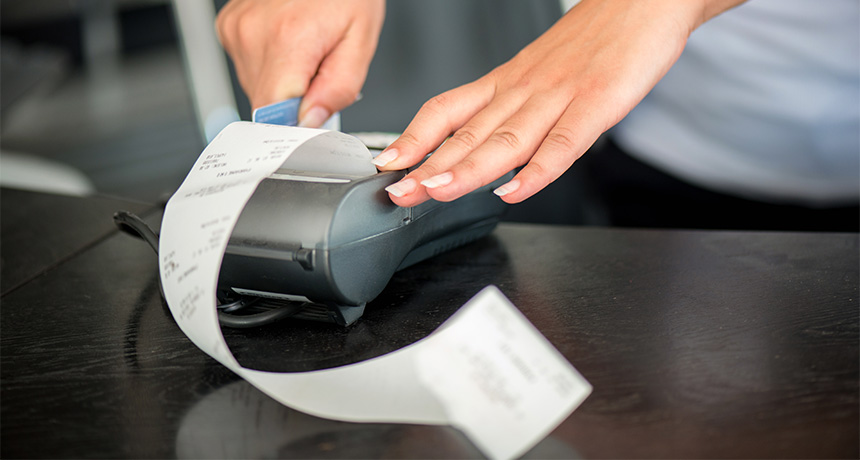Latest BPA replacement seeps into people’s blood and urine
Cashiers handling receipts had potentially risky concentrations of BPA, two chemical relatives

TOXIC TOUCH By handling receipts, cashiers may be exposed to worrisome levels of BPA and its ilk, which can seep into the body through the skin.
Zurijeta/Shutterstock








